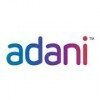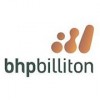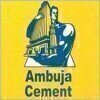Mining Engineer
60+ Mining Engineer Interview Questions and Answers

Asked in UltraTech Cement

Q. What is latest technologies used in mining industry with Explanation? Regarding drilling charging and blasting operation? Some question on Latest Machineries used in Mining industry and Mines safety related to...
read moreThe latest technologies in the mining industry include automated drilling systems, advanced charging and blasting techniques, and safety devices in excavation machinery.
Automated drilling systems use advanced sensors and algorithms to optimize drilling operations and improve efficiency.
Advanced charging and blasting techniques, such as electronic detonators and computer-controlled blasting, enhance safety and precision in rock fragmentation.
Latest machineries in mining indust...read more

Asked in Hindustan Zinc

Q. How can we do Underground working , how blasting system achieved in underground mines. Support system , ventilation ,
Underground working in mining involves the use of blasting systems, support systems, and ventilation.
Underground working in mining is done through the use of tunnels and shafts.
Blasting systems are used to break up the rock and extract the desired minerals.
Support systems such as rock bolts, shotcrete, and steel arches are used to ensure the stability of the underground workings.
Ventilation systems are crucial for providing fresh air, removing dust and gases, and maintaining ...read more
Mining Engineer Interview Questions and Answers for Freshers
Asked in S.N. Sunderson & Co

Q. Tell me about the role of a mining engineer in an underground coal mine.
A mining engineer in an underground coal mine is responsible for designing and implementing mining plans, ensuring safety protocols, and optimizing production.
Designing and implementing mining plans to extract coal efficiently and safely
Ensuring compliance with safety regulations and implementing safety protocols
Optimizing production by analyzing geological data and implementing efficient mining techniques
Monitoring and managing equipment and machinery used in the mining proc...read more

Asked in Vedanta Limited

Q. Why does Vedanta not provide opportunities for physically handicapped individuals in mining jobs?

Asked in Hindustan Zinc

Q. Calculate the blast output on a given dataset and powder factor.
Explaining blast output calculation and powder factor calculation.
Blast output calculation involves determining the amount of material moved during a blast.
Powder factor calculation involves determining the amount of explosive needed to move a certain amount of material.
Blast output calculation can be done using the formula: Volume of material moved = hole volume x burden x spacing x number of holes.
Powder factor calculation can be done using the formula: Powder factor = mass...read more

Asked in Hindustan Zinc

Q. Which gases are released during blasting, and how are they handled?
Gases like carbon monoxide and nitrogen oxides are present from blasting and are handled through ventilation and monitoring.
Gases are produced during blasting due to the combustion of explosives.
Carbon monoxide and nitrogen oxides are the most common gases produced.
These gases can be harmful to humans and the environment.
Ventilation systems are used to remove the gases from the mine.
Monitoring systems are used to detect the presence of gases and ensure safe levels.
Personal pr...read more
Mining Engineer Jobs




Asked in Adani Enterprises

Q. What are the costs associated with operations, and what methods can be employed to reduce these costs?
Costs associated with operations in mining and methods to reduce them
Costs include equipment maintenance, labor, energy consumption, and waste disposal
To reduce costs, implement efficient mining techniques, optimize equipment usage, and streamline processes
Utilize automation and technology to improve productivity and reduce labor costs
Implement proper planning and scheduling to minimize downtime and maximize production
Regularly monitor and analyze operational data to identify...read more

Asked in Zuari Cement

Q. Which type of machinary used and explain about machinery and cost per tonne
Various types of machinery are used in mining operations, with costs varying depending on the type and size of the equipment.
Excavators are used for digging and removing overburden or ore, with costs ranging from $500,000 to $1 million per unit.
Haul trucks are used to transport ore and waste materials, with costs ranging from $2 million to $5 million per unit.
Drills are used for exploration and production, with costs ranging from $500,000 to $3 million per unit.
Crushers are u...read more
Share interview questions and help millions of jobseekers 🌟


Asked in BHP Billiton

Q. What are three things you would consider when making a mine plan?
Key considerations for making a mine plan
Geological characteristics of the ore body
Economic feasibility and profitability
Environmental impact and sustainability
Asked in Al Jood Natural Resources

Q. Have you worked in Al Nakheel Stones (Formerly Gulf Star Minerals and Aggregates)?
Yes, I have worked in Al Nakheel Stones (formerly Gulf Star Minerals and Aggregates).
I worked as a mining engineer in Al Nakheel Stones for 2 years.
During my tenure, I was responsible for overseeing the extraction and processing of minerals and aggregates.
I also implemented safety measures and ensured compliance with environmental regulations.
One of my major achievements was optimizing the production process, resulting in a 15% increase in output.
I left the company on good te...read more

Asked in Essel Mining & Industries

Q. What is mining - mining is the process of extraction of mineral from the earth surface from benifit of man caind.
Mining is the process of extracting minerals from the earth's surface for human use.
Mining involves digging, drilling, and blasting to access mineral deposits
Various methods are used for mining, including open-pit mining, underground mining, and placer mining
Minerals extracted through mining include coal, gold, copper, and diamonds

Asked in Adani Enterprises

Q. What are the options available for addressing labor unrest occurring at a project site?
Options for addressing labor unrest at a project site include negotiation, mediation, implementing fair labor practices, and seeking legal recourse.
Negotiate with labor unions or representatives to address grievances and reach a resolution
Utilize mediation services to facilitate communication and find common ground between parties
Implement fair labor practices and policies to address underlying issues and improve working conditions
Seek legal recourse through labor laws and re...read more

Asked in Hindustan Zinc

Q. 3.Longwall mining face power pack position with detailed layout.
The power pack position for longwall mining face should be strategically located for efficient operation.
The power pack should be located near the longwall face to minimize the length of hydraulic hoses and electrical cables.
It should be positioned in a safe and accessible location for maintenance and repair.
The power pack should be designed to withstand the harsh mining environment, including dust and moisture.
The layout should be optimized for efficient operation, with clea...read more
Asked in WACEM

Q. What environmental protections are you referring to in relation to mines?
Environmental protections in mining focus on minimizing ecological impact and ensuring sustainable practices.
Water management: Implementing systems to prevent contamination of local water sources, such as using sedimentation ponds.
Biodiversity conservation: Creating buffer zones around mining sites to protect local flora and fauna, like preserving habitats for endangered species.
Waste management: Proper disposal and treatment of mining waste to prevent soil and water pollutio...read more

Asked in Hindustan Zinc

Q. What is the percentage of extraction in bord and pillar mining?
Bord and pillar mining percentage of extraction refers to the amount of coal or ore that can be extracted from a given area using this method.
The percentage of extraction in bord and pillar mining can vary depending on factors such as the size of the pillars left behind, the thickness of the seam being mined, and the equipment used.
In general, the percentage of extraction for coal using bord and pillar mining ranges from 40% to 60%, while for ore it can be as high as 80%.
Fact...read more
Asked in WACEM

Q. What machinery have you operated or encountered in your mining experience?
I have operated various mining machinery, including excavators, haul trucks, and drilling rigs, enhancing my operational expertise.
Excavators: Operated Caterpillar 320D for digging and material handling.
Haul Trucks: Experience with Komatsu 785 for transporting ore.
Drilling Rigs: Worked with Sandvik DP1500 for blast hole drilling.
Loaders: Used Volvo L350H for loading materials onto trucks.
Crushers: Familiar with Metso HP300 for ore processing.
Asked in WACEM

Q. What precautions are being taken to ensure safety in mines and with heavy machinery?
Safety in mines is ensured through rigorous protocols, training, and technology to protect workers and equipment.
Regular safety training sessions for all personnel to ensure awareness of hazards.
Implementation of strict protocols for machinery operation, including lockout/tagout procedures.
Use of personal protective equipment (PPE) such as helmets, gloves, and respirators.
Regular maintenance and inspection of heavy machinery to prevent malfunctions.
Installation of advanced mo...read more
Asked in WACEM

Q. What types of maps are being prepared in the mining sector?
Various maps are essential in mining for exploration, planning, and operational purposes, aiding in resource management.
Geological Maps: Show rock types and structures, e.g., a geological map of a mineral deposit.
Topographic Maps: Illustrate terrain features, crucial for site planning and access routes.
Mine Layout Maps: Detail the design of underground or open-pit mines, including shafts and tunnels.
Resource Maps: Indicate the distribution of minerals and resources, helping i...read more

Asked in Jms Mining Services

Q. What is solid blasting, and what precautions should be taken?
Solid blasting is a method used in mining to break up rock using explosives. Precautions must be taken to ensure safety.
Solid blasting involves using explosives to break up rock in mining operations
Precautions include proper training for personnel handling explosives
Safety measures such as warning signals and barricades should be in place
Regular inspections of equipment and storage areas are necessary to prevent accidents
Asked in WACEM

Q. How can one manage manpower effectively and smoothly?
Effective manpower management involves strategic planning, communication, and motivation to enhance productivity and teamwork.
Establish clear roles and responsibilities to avoid confusion. For example, define specific tasks for each team member in a project.
Implement regular communication channels, such as weekly meetings or updates, to ensure everyone is aligned and informed.
Utilize performance metrics to assess productivity and identify areas for improvement. For instance, ...read more
Asked in WACEM

Q. What is the daily production capacity of your working mines?
Our mines have varying daily production capacities based on type and location, ranging from hundreds to thousands of tons.
Open-pit mines can produce 10,000 tons of ore daily, e.g., copper mines in Chile.
Underground mines may yield 1,500 tons per day, like gold mines in South Africa.
Production capacity is influenced by factors like equipment efficiency and ore grade.
Asked in WACEM

Q. What precautions are taken during blasting operations?
Precautions in blasting operations ensure safety, minimize risks, and protect personnel and equipment during mining activities.
Conduct thorough risk assessments before blasting to identify potential hazards.
Establish a safe perimeter around the blasting site, typically 500 meters, to keep unauthorized personnel away.
Use proper blasting techniques and materials, such as ANFO or emulsion explosives, to control the blast's impact.
Implement a clear communication plan, including w...read more
Asked in WACEM

Q. What reports are being submitted to the local government?
Mining engineers submit various reports to local governments to ensure compliance and address community concerns.
Environmental Impact Assessments (EIA) to evaluate potential ecological effects.
Annual production reports detailing the quantity of minerals extracted.
Safety reports outlining measures taken to protect workers and the community.
Reclamation plans that describe how the land will be restored post-mining.
Community engagement reports summarizing interactions with local ...read more
Asked in WACEM

Q. What strategies can be implemented to prevent mine inundation?
Implementing effective strategies is crucial to prevent mine inundation and ensure safety and operational efficiency.
Conduct thorough geological surveys to identify water sources and aquifers.
Implement effective drainage systems, such as sumps and pumps, to manage water inflow.
Use water diversion techniques, like ditches and berms, to redirect surface water away from mining areas.
Regularly monitor groundwater levels and adjust mining operations accordingly.
Employ advanced tec...read more
Asked in HINDCO CONSULTING SERVICES

Q. Which explosive is used in solid blasting?
ANFO (Ammonium Nitrate Fuel Oil) is commonly used in solid blasting due to its stability and effectiveness.
ANFO (Ammonium Nitrate Fuel Oil) is a commonly used explosive in solid blasting operations.
It is a mixture of ammonium nitrate and fuel oil, providing a stable and powerful explosive.
ANFO is preferred for its cost-effectiveness and ease of handling in mining and construction industries.
Asked in HINDCO CONSULTING SERVICES

Q. How many types of explosives are there?
There are two main types of explosives: high explosives and low explosives.
High explosives: detonate with a supersonic shock wave, examples include TNT, C-4, and RDX
Low explosives: deflagrate at a subsonic speed, examples include black powder and smokeless powder

Asked in Sandvik Mining and Rock Technology

Q. What is friction? How many types of gears? What is strees and strain
Friction is the force resisting the relative motion of solid surfaces, gears are of various types like spur, helical, bevel, etc., stress is the force applied to a material, strain is the deformation caused by stress.
Friction is the force that opposes the motion of one surface over another.
Types of gears include spur gears, helical gears, bevel gears, worm gears, etc.
Stress is the force applied to a material per unit area, measured in units like Pascals or psi.
Strain is the d...read more
Asked in WACEM

Q. What are the details of the blasting process?
The blasting process in mining involves controlled explosions to fragment rock for easier extraction.
1. Pre-blast survey: Assessing the area for safety and environmental impact.
2. Drill and blast design: Planning the pattern, depth, and type of explosives to be used.
3. Loading explosives: Carefully placing explosives into drilled holes, ensuring proper spacing.
4. Detonation: Using a blasting machine to initiate the explosion, often with a delay for safety.
5. Post-blast assess...read more

Asked in Jindal Steel and Power

Q. What types of drilling are used in underground mines?
Types of drilling in underground mines include diamond drilling, percussion drilling, and rotary drilling.
Diamond drilling is used for obtaining core samples and is the most accurate method.
Percussion drilling involves breaking rock with a hammer-like tool.
Rotary drilling uses a rotating drill bit to bore into the rock.
Other methods include blasthole drilling and raise boring.

Asked in Innopay Technologies

Q. What was your role in your previous company?
In my previous role as a Mining Engineer, I focused on optimizing extraction processes and ensuring safety compliance.
Conducted feasibility studies to assess the viability of mining projects, such as evaluating ore quality and quantity.
Developed and implemented mining plans that maximized resource extraction while minimizing environmental impact.
Collaborated with geologists to analyze geological data and improve drilling techniques, leading to a 15% increase in efficiency.
Man...read more
Interview Questions of Similar Designations
Interview Experiences of Popular Companies









Reviews
Interviews
Salaries
Users


















